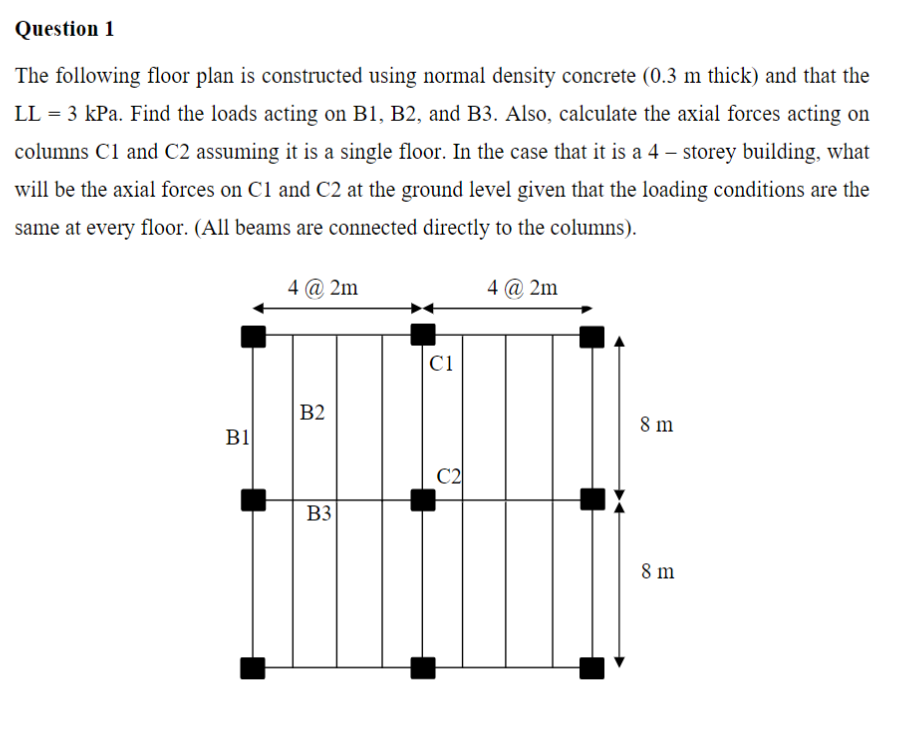A a uniformly distributed load q k in kpa.
3 kpa floor loading.
Therefore if you plan on converting a commercial property to residential the floor is capable to withstand the higher loads and meet the requirements.
3 1 3 the imposed loads as given in clause 3 2 to 3 5 shall be.
Add an allowance for partitions normally added on top of the imposed floor loading for example you might have a total imposed floor load 3 5kn m2 made up of 2 5kn m2 1 0kn m2 for partitions change the utilisation factor from 1 00 assumed here see note 3 to 0 80 commonly assumed by designers.
The imposed loading on a office commercial use building is generally 3 kpa 3000 kg per sqm.
Floor loading also referred to as ground pressure is an industry term used to determine whether a given floor.
If there s wall board covered ceiling suspended from the underside of that floor the dead load increases to about 10 pounds per square foot.
1 0 m 2 of floor the loading over the 1 0 m area is 2 0 kpa.
2 3 3 minimum floor live loads the minimum floor live loads shall be the greatest actual imposed loads resulting from the intended use or occupancy of the floor and shall not be less than the uniformly distributed load patterns specified in sec 2 3 4.
4 kpa is 4 kn m.
2 5 kn m2 for floors above ground floor and 3 0 kn m2 at or below ground floor over may be more appropriate with 7 5 kn m2 over 5 of the floor area to allow for future flexibility.
Design parameters armed with this information it becomes easier to understand why a deck or balcony might need to be designed to a higher floor loading than a domestic floor.
3 1 4 the uniformly distributed load q k and the concentrated load or line load q k shall be.
The dead load on a floor is determined by the materials used in the floor s construction.
Whichever shall produce the most adverse effect.
3 6 kpa 115 psi 792 9 kpa maximum 1075 lb 487 6 kg 141 9 psf 6 8 kpa 215 psi 1482 4 kpa maximum wheel load the maximum pressure that any one tire exerts on the floor while supporting its rated load this is relevant to.
Or b a concentrated load or line load q k in kn or kn m as appropriate.
Floor live loads excluding storage loading 3 0 kpa offices class rooms laboratories etc excluding carparking code beam size mm floor joist spacing mm 300 338 360 400 450 600 t257ap10 248 x 71 5 74 5 41 5 24 4 97 4 69 4 06 t257bp10 248 x 71 5 89 5 54 5 37 5 10 4 81 4 16 t259ap10 248 x 88 6 12 5 87 5 73 5 43 5 12 4 44.
4 kn m x 1 m 4 kn weight you can convert to kg by dividing by 9 8 so that is 408 kg.
This is correct only for a textbook oversimplified answer.
And a residential use building is 1 5 kpa 1500 kg per sqm.

